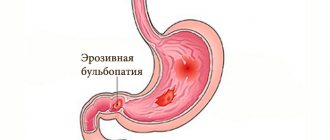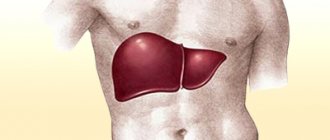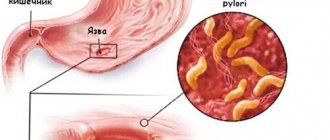Carriage of hepatitis C differs from acute viral disease. The presence of antibodies to infection in a person’s blood in the absence of symptoms or pronounced pathological changes in the liver suggests a chronic latent form of HCV. Despite the absence of symptoms, the carrier of the virus poses a certain danger to others, as he can infect healthy people.
In addition, being a carrier of the virus means that at any moment the disease can take an acute form and require immediate medical intervention. Observation by specialists is recommended for absolutely all patients in whose blood a marker of the hepatitis C virus was detected at least once.
What does it mean to be a carrier of hepatitis C?
Hepatitis type C is otherwise called HCV infection. In most cases, the course of the disease is chronic. Clinical manifestations are not always visible, which fits into the definition of carriage of the virus. The degree of infection activity may vary, as can the prognosis of outcome for carriers.
Carriage is the presence in a person’s blood of markers indicating the presence of the hepatitis C virus. In this case, the infection does not manifest itself actively and is in a latent state.
Modern views on virus carriage
More than a decade ago, it was believed that the absence of clinical signs, despite the presence of the antigen in the blood, constituted a healthy carriage. This form was not considered a disease and did not pose a threat to others. Over time, views on the problem have changed somewhat.
Today, more and more specialists are inclined to believe that the presence of HBsAg is evidence of a chronic form of the pathology.
An inactive infectious process is characterized by ongoing, sluggish damage to hepatocytes (liver cells), as a result of which they gradually die and are replaced by connective tissue. Against the background of cirrhosis, malignancy of organ structures and progression of functional gland failure are often observed.
In this regard, it is generally accepted that there is no such thing as a healthy carrier state. A person is a threat to others and is capable of infecting them.
We draw attention to the fact that the virus can mutate, which is why it may not be detected by standard test systems.
Causes of carriage
Most often, carriers of hepatitis C who become infected with the virus through contact with infected blood seek medical help. But in a quarter of virus carriers, the cause of the chronic disease cannot be determined. The virus enters the human body exclusively through the blood.
Watch the video about the transmission routes of hepatitis C:
There are several routes of infection:
- Blood transfusion containing HCV infection.
- Using non-sterile syringes for intravenous injections.
- The use of non-sterile instruments in medicine and cosmetology (this also includes needles in a tattoo parlor and equipment from a manicurist).
- The use of other people's personal hygiene products, the use of infected razors.
- In less than 1% of cases, the virus is transmitted by blood-sucking insects: mosquitoes, ticks, fleas, etc.
- Sexual intercourse without using protection.
- Vertical transmission from mother to child during childbirth or breastfeeding (occurs quite rarely in 1-5% of cases).
Turning to the question of the causes of hepatitis C, it should be noted that infection cannot occur as a result of kissing, hugging, shaking hands, or coughing. That is, the virus is not transmitted by airborne droplets or oral routes. It is safe for healthy people to eat from the same container with the virus carrier, if there is no damage in his mouth that causes bleeding.
According to WHO statistics, despite the high level of medicine, more than 40% of cases of hepatitis C infection occur as a result of organ transplants or blood transfusions. In some countries, donated blood is not tested to detect latent HCV infection.
At risk for infection are relatives of the virus carrier, his cohabitants, and medical workers. Cohabitation with a carrier of the virus is completely safe for healthy people, subject to basic rules of personal hygiene, since HCV is not transmitted by airborne droplets.
Prognosis and prevention
Acute viral hepatitis B in adults ends in recovery in 90-95% of cases. But the prognosis of acute hepatitis B worsens significantly if a person has concomitant diseases of the liver and biliary tract, mixed infection (a combination of hepatitis B and D, C viruses), concomitant HIV infection.
With the chronic form of hepatitis B, without the necessary treatment, patients have an increased risk of death due to liver diseases and their complications.
Prevention of hepatitis B infection is based on careful compliance with sanitary and epidemiological measures, which include:
- use of disposable medical instruments;
- strict adherence to the rules of sterilization of reusable instruments;
- thorough screening of blood donors;
- thorough disinfection of dental instruments, devices for trimming manicures, pedicures, and tattoos.
Everyone can reduce the risk of contracting hepatitis B - to do this, you need to pay attention to the quality of sterilization of instruments when visiting a dentist, cosmetologist, tattoo artist, and use individual personal hygiene items. It is also important to give up drug use, casual sex, and undergo regular medical examinations and tests for hepatitis B.
The most effective measure to prevent hepatitis B worldwide is vaccination. It is indicated for every person who cares about their health. After vaccination, immunity is formed, which lasts an average of 15 years. Then it begins to weaken and to maintain it, revaccination is carried out - repeated administration of the vaccine.
Important! According to WHO, in 2022, the proportion of children with chronic hepatitis B in the world under the age of 5 years did not exceed 1%. This figure in 1980–2000 was 5 times higher. This improvement in incidence is due to the use of accessible, safe and effective hepatitis B vaccines.
Vaccination against hepatitis B in Russia
Vaccination against hepatitis B is included in the National Calendar of Preventive Vaccinations.
Both children and adults can get vaccinated. Photo: AndreyPopov / Depositphotos, pediatr-russia.ru The national vaccination calendar of the Russian Federation, approved by Order No. 125n of the Ministry of Health of the Russian Federation dated March 21, 2014, includes three episodes of vaccination against hepatitis B: for newborns (in the first 24 hours of life), in 1 and at 6 months.7 Children from risk groups are vaccinated 4 times: in the maternity hospital, at 1, 2 and 12 months. In addition, vaccination is recommended for all unvaccinated and incompletely vaccinated adults, as well as for those who do not know their vaccination status. In the Russian Federation, mass vaccination against hepatitis started only in 1996, so vaccination is relevant for those who graduated from school earlier.
Conclusion
Viral hepatitis B is a dangerous disease that annually claims about 900 thousand lives. But despite the high risks of complications, timely diagnosis and necessary treatment make it possible to control the course of the disease, reduce the viral load and preserve liver function for many years. To prevent infection with this infection, a person must follow individual hepatitis B prevention measures, undergo regular medical examinations, follow a vaccination schedule for their children, and be vaccinated as adults.
Diagnostics and monitoring of carriers
Without a blood test, an accurate diagnosis cannot be made.
To diagnose hepatitis C, a blood test is used to determine the presence of antibodies to the virus. Markers of the disease are anti-HCV and HCV-RNA, the presence of which indicates the development of infection within the body.
Positive test results are interpreted differently: the presence of IgM antibodies in the blood is characteristic of an active form of the disease, and their absence against the background of normal ALT levels indicates carriage.
The presence of HCV RNA is tested using the polymerase chain reaction method. Such a study is mandatory for all patients with suspected viral hepatitis. The PCR reaction manifests itself from the first days of infection, playing a significant role in early diagnosis.
Any form of chronic hepatitis, including asymptomatic carriage with minimal virus activity, requires constant monitoring by a specialist. The doctor must monitor the patient’s health status because:
- infection activity can change at any time;
- timely initiation of antiviral therapy gives the most stable and rapid results;
- Only under the supervision of a doctor can you prevent the development of severe complications or receive the necessary therapy.
Virus carriers are recommended to undergo examination twice a year, which includes an analysis of transaminase activity (ALT, AST), the content of HCV RNA in the blood. For some indications, the doctor may prescribe a liver biopsy or other non-invasive research methods to determine fibrosis (pathological changes) of liver tissue and the degree of its destructive effects.
Complications of hepatitis B
The main hepatic complications of chronic hepatitis B are cirrhosis and primary cancer (hepatocellular carcinoma). As a result of damage to liver cells, the organ tissue is replaced by connective tissue structures, which leads to fibrosis. Over time, cirrhosis forms in place of these pathological areas - irreversible changes in the liver tissue with compaction of its structure. Such changes several times increase the risk of developing hepatocellular carcinoma.
Irreversible changes in liver tissue lead to the development of liver failure. As a result, the liver ceases to properly neutralize toxins, and also does not produce proteins and enzymes necessary for life. In addition, substances that are released as a result of the death of liver cells enter the bloodstream.
The accumulation of toxic metabolic products in the body causes damage to brain cells and leads to hepatic encephalopathy, including the development of coma.
The death of hepatocytes causes a decrease in the liver's synthesis of blood clotting factors. This can lead to heavy bleeding (gastrointestinal, uterine) and the development of anemia.
Also, in the case of liver cirrhosis, the venous outflow from the organ is disrupted - the inferior vena cava system is affected, which leads to the development of ascites (fluid accumulation in the abdominal cavity), varicose veins of internal organs. Ascites often causes a life-threatening inflammatory disease - peritonitis, and bleeding from varicose veins can be fatal.
How can hepatitis C infection occur from a carrier?
Infection can occur in a dental office, a tattoo parlor, or a manicure. So always make sure your instruments are sterile.
The virus is transmitted only through the entry of infected blood into the bloodstream or open wound of a healthy person. Previously, it was widely believed that hepatitis was a disease of drug addicts.
Today, such statements are groundless, since it has been proven that the social status or lifestyle of those infected does not correlate with the number of carriers in a particular social group.
You can become infected with HCV from a carrier:
- Through any non-sterile instruments. This includes any objects that come into contact with blood (scissors, needles, scalpel, etc.).
- Through unprotected sexual intercourse in the case when there is bleeding damage on the mucous membrane of one of the participants in the process. Therefore, transmission of the HCV virus is typical for rape.
- Through personal hygiene items that come into contact with blood. This may include razors, toothbrushes (if there are bleeding gums or damage to the mouth), etc.
- Vertically from the mother during childbirth or breastfeeding. The risk is low (1-5% of cases).
Preventive actions
There is currently no vaccine against hepatitis C, so nonspecific prophylaxis is the only way to protect yourself from HVC infection. To prevent the development of such a disease, you must adhere to the following recommendations:
- when visiting medical institutions and beauty salons, monitor the sterility of the instruments used;
- stop taking drugs;
- have one healthy sexual partner, otherwise use a condom (it must be taken into account that this contraceptive does not provide reliable protection against the penetration of HVC into the body);
- Do not use other people’s personal hygiene items - razors, combs, towels, etc.
In addition, it is necessary to carry out health education work so that people know almost everything about hepatitis, especially where you can get infected and how to protect yourself from the disease.
Basic rules for the media
Even after receiving antiviral therapy and obtaining “clean” blood tests, former carriers of the HCV virus should be careful and follow a number of rules. Effective treatment of hepatitis was introduced into the arms of doctors relatively recently, and doctors do not have the experience of many years of monitoring cured carriers. Healthy people who have been infected with hepatitis C are recommended to:
- report the infection to doctors, especially dentists, surgeons and medical personnel involved in collecting blood tests;
- warn professionals in cosmetology, tattoo parlors, before a manicure procedure, etc. about illness.
Relatives and cohabitants of carriers should always be aware of the possibility of infection through blood and observe the rules of personal hygiene. In addition, hepatitis can cause complications that develop quickly and asymptomatically, and then quickly destroy the body. It’s good if one of the carrier’s cohabitants knows how to provide first aid.
Particular care should be taken when small children live near hepatitis carriers. They tend to take other people's things without permission and play with inappropriate items. Any things that potentially come into contact with blood (toothbrushes, nail scissors, razors, etc.).
Features and duration of therapy
Considering the symptoms and course of the disease, in some cases specific treatment for hepatitis C is not carried out, since the human immune system itself is able to overcome the disease over time. If therapy for the disease is necessary, the patient should first be thoroughly examined to determine the genotype of the virus.
For therapy, as a rule, antiviral medications are used, which contain ribavirin and interferon. These substances are active against all types of virus, but patients do not always tolerate them well.
Modern direct-acting antiviral drugs (DAA, direct-acting antiviral), that is, drugs that act directly on the virus itself, are more effective and safe. But due to the high cost of these funds, not every patient can purchase them.
The duration of treatment depends on:
- forms of pathology (chronic, acute);
- concomitant diseases;
- type of genotype (it has been established that the treatment of hepatitis C genotype 1a is quite complex);
- effectiveness of treatment measures;
- the presence of other liver pathologies.
Complications and conditions for their development
Course of the disease with complications
Hepatitis C, which occurs even in the most passive form, has a detrimental effect on the health of the carrier, gradually destroying the liver. The virus also negatively affects the immune system and provokes third-party diseases. The most common complications that may occur as a result of carriage of the HCV virus are:
- fibrosis, cirrhosis and liver cancer;
- varicose veins of internal organs;
- liver encephalopathy;
- portal hypertension;
In addition to these complications, the danger for carriers is the attachment to strain C, types A or B.
The symbiosis of strains threatens patients with the development of severe hepatitis, which is characterized by an increase in the virus population in the blood and accelerated development of liver failure. Liver failure alone or through encephalopathy often leads to death.
In order to prevent the addition of strains and, special vaccines are indicated for hepatitis carriers. Directed therapy is necessary for all patients with hepatitis C, as well as observation by a specialized specialist.
Understanding HVC
HVC is an RNA virus. The pathogen comes in several types, or rather genotypes. The infection is highly variable; it continuously mutates, as a result of which the body cannot provide an adequate immune response.
If the immune system identifies a certain type of virus and destroys it, a virus of another type appears after it, which is why the immune system is not able to fully resist the disease. This infection is characterized by the rapid progression of fibrotic changes in the liver.
To date, 6 genotypes of this virus are known, and each of them is divided into subspecies. In our country, genotypes 1a, 1b, 2a and 3a are more common.
Numerous studies have found that the genotype of the virus and the modes of transmission of hepatitis C are interrelated. Thus, it is known that hepatitis C virus genotype 1b is detected in individuals who have undergone blood transfusion (blood transfusion).
Hepatitis C (genotype 3) is most often transmitted through injection drug use. In children, genotypes 1b and 4 are more often diagnosed.
Determining the genotype of the virus (genotyping) is an extremely necessary procedure. Thanks to the results of such a study, a specialist can select the most optimal therapeutic measures and predict the risk of complications.
How to get rid of the virus
It is mandatory to switch to a healthy lifestyle and follow all doctor’s recommendations
A positive result for the presence of the HCV virus in the blood becomes the basis for a diagnosis of acute or chronic hepatitis. The form of infection depends on the concentration of virus antigens in the patient's blood.
Mild acute hepatitis is treated on an outpatient basis by following bed rest and a special diet. The serious condition of the infected person requires transfer to a hospital and prescription of drug therapy.
About 80% of cases of hepatitis type C occur in the chronic form of the disease. If the body cannot cope with the virus on its own within six months, then the patient is prescribed antiviral therapy using interferon and ribavirin.
Treatment of hepatitis lasts from 6 to 18 months, depending on the characteristics of the virus and its genotype. For example, type 1 of the virus is completely curable in half of the cases, and types 2 and 3 in 90% of cases.
The patient is considered healthy and has completely defeated the virus after 6 months of stable negative test results for the presence of antibodies in the blood. The diagnosis can be officially removed at the moment when doctors establish a stable response.
For the next 6-8 years (and sometimes until the end of life) after the diagnosis is removed, small amounts of antibodies to the virus may still periodically appear in the blood. They do not pose a danger to the wearer.
A prerequisite for getting rid of carriers of the virus is giving up bad habits. Compliance with all doctor’s recommendations and taking antiviral therapy cannot contribute to the recovery of a person taking drugs, alcohol or nicotine.
Symptoms of hepatitis B
The hepatitis B virus enters the human blood and then penetrates the liver, where it actively multiplies. From the moment of infection to the appearance of the first clinical symptoms of the disease, it takes from 6 weeks to 6 months - this is the incubation period.6 The disease develops gradually and often does not cause visible symptoms.
Clinical manifestations of hepatitis B are associated with inflammation of the liver tissue and are considered nonspecific. Patients develop general weakness, appetite worsens, abdominal pain occurs, and body temperature may rise. At night and in the morning, arthralgia is often observed - pain in the joints, which quickly disappears with movement.
The inflammatory process in the liver under the influence of hepatitis B disrupts the normal flow of bile, which causes the development of jaundice. Its main features:
yellowing of the skin, sclera (Fig. 2);
- skin itching;
- darkening of urine;
- stool lightening.
Figure 2. Manifestations of jaundice.
Photo: dariakulkova.gmail.com / Depositphotos From the moment jaundice appears, the liver begins to enlarge. Every second person with an acute form of hepatitis B also has an enlarged spleen.
As jaundice increases, the general condition worsens. Dyspeptic syndrome often develops, which manifests itself:
- nausea, vomiting;
- belching;
- feeling of heaviness in the epigastric region;
- bloating;
- tendency to constipation.
Against the background of the inflammatory process, the functions of liver cells - hepatocytes - are disrupted. Among other things, they stop producing vital blood clotting factors necessary for the natural mechanisms of stopping bleeding. This leads to the development of hemorrhagic syndrome - bleeding gums, nosebleeds, and in women - a tendency to uterine bleeding.
With hepatitis B, blood clotting may be impaired. Photo: AndreyPopov / Depositphotos
With hepatitis B, the detoxification function of the liver also suffers - its ability to neutralize metabolic products, as well as toxins from the external environment, is impaired. Their accumulation has a negative effect on the central nervous system. In severe cases and severe intoxication, people with hepatitis B may develop hepatic encephalopathy - this pathology leads to impaired consciousness of varying severity, and can even cause coma.
The total duration of the icteric period is 4–6 weeks. With a favorable outcome, the symptoms of jaundice gradually decrease, and at the same time the general condition of people with hepatitis B begins to improve. Their weakness decreases, their appetite is restored, and the size of the liver and spleen is normalized.
Acute viral hepatitis B does not always end in recovery. In approximately 8–20% of cases, the disease becomes chronic (Fig. 3) [2]. This version of the course of the infection is characterized by stages - the disease may not bother the patient for a long time, and when the viruses are activated, it may enter the active phase.
Figure 3. How often does hepatitis B become chronic? Source: WHO/NCBI
Diagnosis of hepatitis B
It is impossible to distinguish hepatitis B from other types of viral hepatitis on the basis of the clinical picture alone.
Therefore, in making a diagnosis, the main importance is given to laboratory research methods - identifying serological markers of the disease - specific antibodies - in the blood. Their determination allows not only to make a correct diagnosis, but also to clarify the form of hepatitis B, since specific markers of infection are determined in different cases (Table 1). Table 1. Features of laboratory diagnostics in patients with hepatitis B.
| Form of the disease | HBsAg | anti-Hbc-IgM | anti-HBc-IgG | anti-HBs |
| People with hepatitis B | + | |||
| Remission stage | + | + | ||
| Exacerbation stage | + | + | + | |
| After a past infection | + | + | ||
| After vaccination | + |
To assess the activity of the infectious process, the number of viral copies in blood serum is determined using the polymerase chain reaction (PCR). The PCR method allows you to identify the genetic material of viruses, therefore it is considered the “gold standard” in the diagnosis of infectious diseases.
What tests should people with hepatitis undergo?
To determine the effect of the virus on the body, people with hepatitis B must regularly undergo a number of laboratory tests:
- clinical blood and urine tests;
- biochemical blood test - determination of liver transaminase activity, bilirubin level, total protein;
- coagulogram - study of blood clotting factors.
These laboratory tests allow you to assess the functional state of the liver, monitor the dynamics of the pathological process, and evaluate the quality of treatment.
The main method of instrumental research for hepatitis B is ultrasound examination of the liver. For a more accurate diagnosis of the liver condition, patients are recommended to perform CT, MRI and elastography.
If a patient is suspected of having liver cancer, he needs to perform a puncture biopsy - take a tissue sample for detailed analysis. Cytological examination of cells obtained during the procedure allows us to reliably determine the condition of the liver in patients with viral hepatitis B.
Treatment of viral hepatitis B
The treatment regimen for the pathology depends on the stage of hepatitis B and the patient’s health status. Pathogenetic treatment consists of the use of antiviral agents. It is indicated in the case of the fulminant form of acute hepatitis B and for people with severely weakened immunity.
In the chronic form of the disease, pathogenetic therapy can significantly reduce the risk of cirrhosis and liver cancer. Main indications for prescribing antiviral drugs:
- a large number of viral copies in the blood;
- high levels of a marker of liver damage - alanine aminotransferase.
Currently, no drug can completely free the human body from the virus. But during therapy, the rate of its replication (reproduction) decreases, due to which the number of viral particles decreases, and further damage to liver cells slows down.
For pathogenetic treatment of hepatitis B, two groups of drugs are used:
- Direct acting antiviral agents.
- Immunomodulatory agents
The duration of treatment depends on the genotype of the hepatitis B virus, the drug and a number of other factors. On average, the duration of therapy ranges from 6 to 12 months.
Important! You can often see various advertising offers for drugs and traditional methods that allow you to completely get rid of the hepatitis B virus. But from the standpoint of evidence-based medicine, the effectiveness of such treatment methods has not been confirmed.
Lifespan of carriers
Hepatitis C and its carriage are not a death sentence
Carriage of the hepatitis C virus in itself does not pose a threat to the patient's life. But chronic infection contributes to the development of pathologies that have a destructive effect and shorten life expectancy. For each patient, the doctor makes an individual prognosis, which includes a life prognosis.
The lifespan of virus carriers is influenced by many factors:
- method of acquiring carrier status;
- age, gender and lifestyle of the patient;
- characteristics of immunity;
- duration of infection and timeliness of detection;
- receiving therapy;
- lifestyle, bad habits;
- concomitant chronic diseases (obesity, hepatosis, diabetes, etc.).
In about a third of those infected, the disease begins to progress only 50 years after acquiring the virus. Accordingly, the prognosis for the lifespan of such patients is very optimistic.
In another third of virus carriers, the time interval between the initial stage and severe cirrhosis is less than 20 years. In this case, you can increase your lifespan by following all the doctor’s recommendations and taking antiviral therapy.
Persons who have serious health problems, take alcohol, drugs, etc., acquire cirrhosis within 6-8 years after infection. The disease is also more severe in older people and children.
Who is at risk
To find out who is at risk, check out the table.
| Group of patients | Description |
| Drug addicts | When injecting drugs, people neglect safety rules, which is why 67% of drug addicts are virus carriers |
| Recipients of donated blood and organs; patients regularly undergoing invasive procedures | The risk of infection depends on the frequency of medical procedures performed. When compiling statistics, the number of invasive interventions for an individual over a 12-month period is taken into account. Particular attention is paid to patients who underwent blood transfusion (before 1988 abroad and before 1991 in the USSR). Accurate diagnostic methods have not been used until this time, so there is a possibility of a long latent course of the disease |
| Children born to infected women | The probability of transmission of the virus in an HIV-negative mother is 4-8%, and in an HIV-positive mother it is 17-25% |
| Sexual partners of virus carriers | The likelihood of infection during vaginal sex is quite low - from 5 to 7%. People who are promiscuous or have anal sex are at increased risk. To minimize risks, experts recommend using condoms during every sexual encounter. |
| HIV positive patients | The risk of contracting hepatitis in HIV-infected people is high, regardless of the mode of transmission of the pathogen |
| Patients using drugs intranasally | People with a drug-impaired body are at greater risk than those who are not addicted. |
| Owners of piercings and tattoos | According to research, lovers of piercings and tattoos are virus carriers more often than other people. It should be noted that the risk of infection depends on the sterility of the instruments used by the master. If a salon employee uses disposable tools and gloves, and also disinfects work equipment and surfaces, then the likelihood of infection is minimal |
In addition, the risk group includes:
- Persons who are in prison or who have previously served time;
- Patients undergoing hemodialysis;
- Healthcare workers (especially emergency and first aid workers, blood banks, emergency surgery).
Experts recommend regular testing for those who have already had hepatitis C. Special attention is also paid to people with elevated levels of liver enzymes (especially for unknown reasons).
Hepatitis C - basic concept
One of the most severe forms of hepatitis is C, the pathogens of which parasitize only the cells of the human body.
The main danger of viral hepatitis C is its course - for many years it can masquerade as many other pathologies without showing its harmful effects. For this feature, it received a common definition - a gentle killer.
The invisible infection progresses quickly. Undiagnosed hepatitis C, within 2-24 months, becomes chronic, in which irreversible destructive processes begin in the liver, and subsequently in other organs. They can be very slow - the patient does not experience discomfort for 10-30 years. So rapid - severe liver dysfunction develops in 6 months - 1 year. According to medical statistics, about 30% of cases of hepatitis C end in cirrhosis, 25% in carcinoma, and 80% of patients have fatty liver degeneration.
The first signs in women and men
The first signs of hepatitis B:
- Weakness, slight fever, headache, lack of appetite.
- Then there are signs caused by indigestion: nausea, abdominal pain, vomiting. Impaired bilirubin metabolism causes dark urine and discolored stool.
- After these symptoms begin to gradually disappear, jaundice develops - a corresponding staining of the skin and sclera of the eyes.
Most patients show no signs of the disease. Therefore, doctors consider any person as potentially infected, observing the necessary precautions during medical procedures and using disposable instruments.









